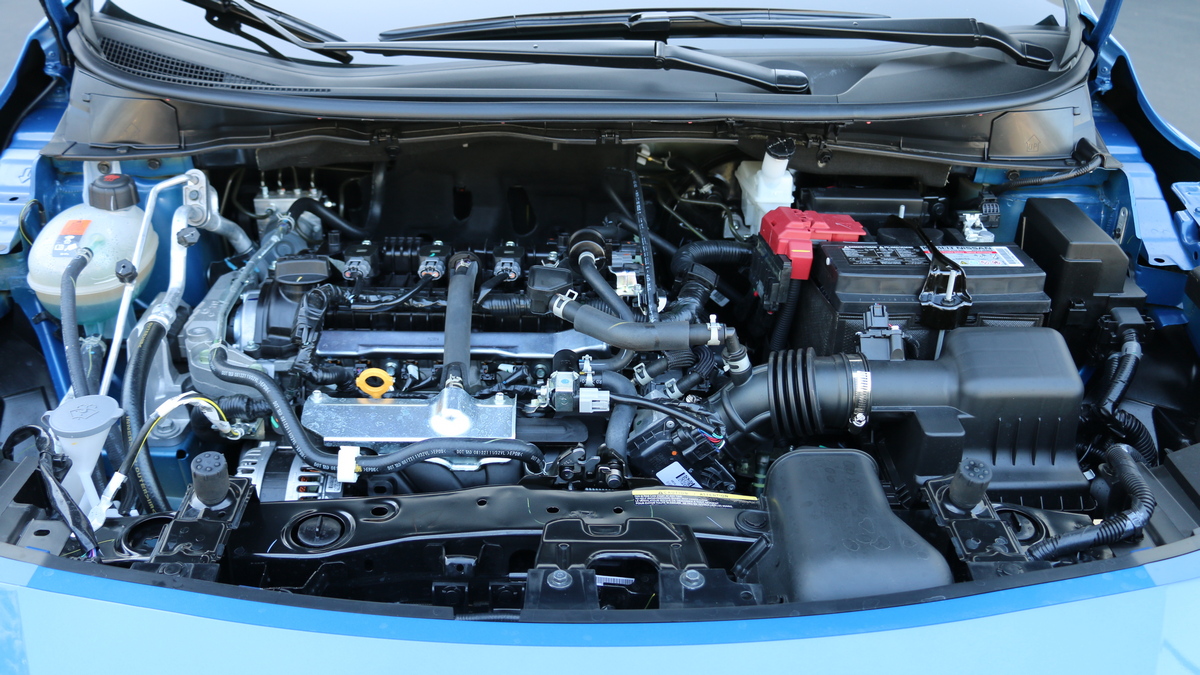Quick Facts About Fast-Charging Electric Cars
- Comparing charging speeds is tricky due to unverified manufacturer claims and varying reporting methods.
- Charging rates aren’t constant; batteries charge fastest early on, then slow as they fill up.
- Battery technology and charging infrastructure are rapidly evolving, making current rankings subject to change.
Get to know the fastest-charging electric cars. Electric vehicles (EVs) are fast becoming mainstream, but it’s still the Wild West when comparing them to one another.
We set out to find the five fastest-charging electric cars and quickly found that we’d waded into a chaotic question without a simple answer.
- List of the Fastest-Charging Electric Cars
- The State of Electric Car Charging
- How You Charge Electric Cars Is Everything
- EV Battery Size Is an Issue
- Manufacturer’s Claims: No One Fact-Checks Them
- Battery Technology Is Changing Rapid
5 of the Fastest-Charging Electric Cars
So, how should we compare electric car charging times? Given the wide disparity of data available, we have to pick one flawed measurement over another and accept that we’re using unverified manufacturer data to find the fastest range per minute specs. With that in mind, we’ve calculated how fast each electric car’s battery can charge under optimal conditions.
1. Lucid Gravity — 18.2 miles per minute
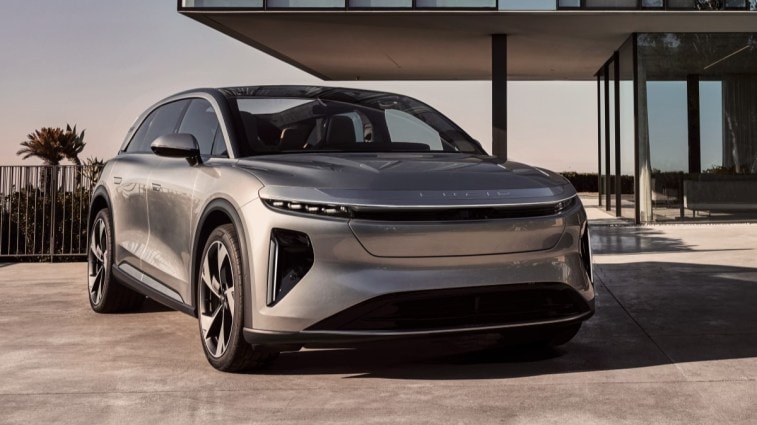
The all-new electric SUV Lucid Gravity will bring luxury and practicality with its California-inspired design and a highly customizable interior that comfortably seats up to seven adults. It boasts an impressive EPA-estimated range of 450 miles and industry-leading charging technology that can add 200 miles in under 12 minutes, with seamless access to Tesla Superchargers and 400kW fast charging. The Gravity sets a new benchmark for long-distance travel and lightning-fast recharging. The Gravity Touring trim is available to order now, starting at $81,550, including the destination charge.
2. Porsche Taycan — 16.9 miles per minute
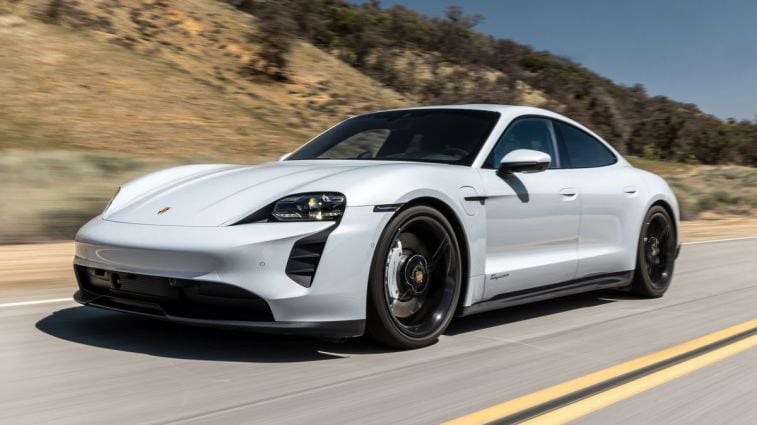
Porsche’s Taycan is capable of a quick surge of charging that will, the manufacturer says, give you nearly 170 miles of range in 10 minutes at an 800-volt DC fast charger. It won’t charge at that rate indefinitely, but should you find your battery running low, you can get enough juice for more than a couple of hours’ worth of highway-speed driving in the time it takes to stretch your legs and order a cup of coffee.
3. Lucid Air — 16.7 miles per minute
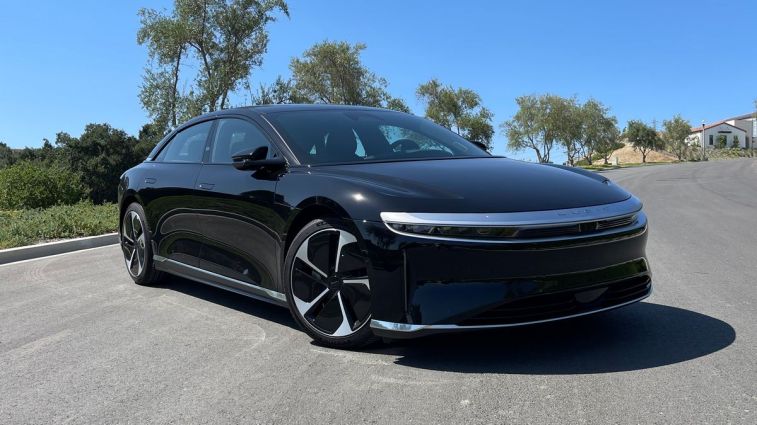
Lucid delivered its first EVs to customers in 2022, and the sleek sedans are still new enough to turn heads when spotted on the road. With a starting price of $71,400, the Air has the longest EPA-certified range of any electric car. It has a max EPA range of up to 516 miles with 19-inch wheels. The manufacturer, a California startup, boasts owners can use DC quick charging to get 200 miles of range in as little as 12 minutes.
4. Hyundai Ioniq 6 — 14.5 miles per minute
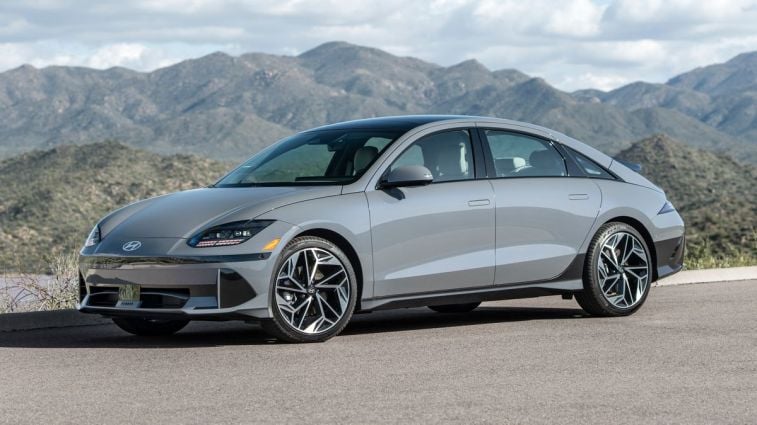
The Hyundai Ioniq 6 was delivered to U.S. customers in spring 2023. The all-electric sedan with its aerodynamic silhouette and futuristic design elements is based on the same platform as the multi-award-winning Ioniq 5. Hyundai has performed some clever electrical engineering with the Ioniq 6, allowing it to charge at a maximum of 800 volts — that’s about as good as it gets. Hyundai says the Ioniq 6 can add up to 218 miles of range in 15 minutes.
5. Hyundai Ioniq 5 — 14 miles per minute
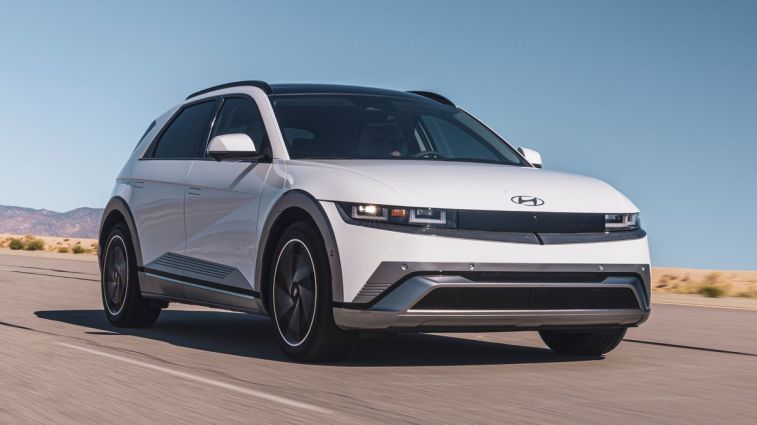
The Hyundai Ioniq 5 impresses with its bold, retro-inspired design and spacious interior. It has an EPA-estimated range of up to 303 miles and advanced 800-volt charging technology that can replenish 69 miles of range in five minutes, according to Hyundai’s specifications.
6. Tesla Model S — 13.3 miles per minute
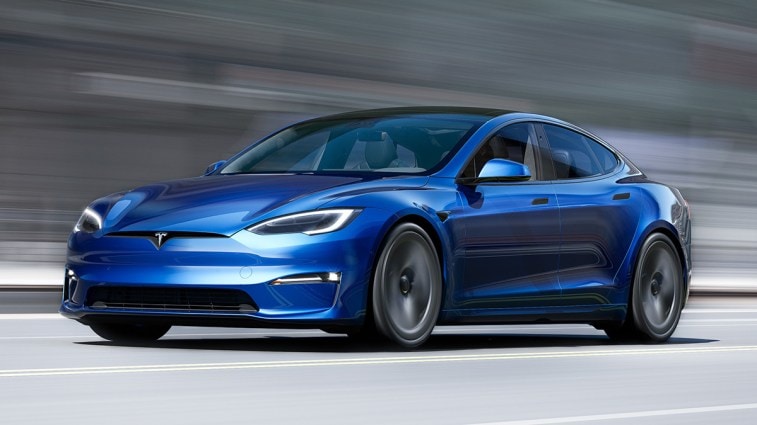
Tesla’s Model S is capable of gaining 200 miles of range in 15 minutes using the latest technology within the company’s robust Supercharger network. Two other Teslas, the Model 3 and Model X, have peak charging rates of 11.7 miles per minute. The Model Y, the best-selling electric car, gains a respectable 10.8 miles per minute of charging under ideal conditions.
Methodology: The above calculations use “miles per minute” to measure the maximum mileage each vehicle can accept in one minute from a Level 3 DC fast charger at 350 kW. These cars will not charge at a constant rate, and each has a battery of a different size, so miles per minute will not tell you how long each vehicle takes to reach full charge. But miles per minute makes a helpful shorthand to help show what you’d be getting into if you were to buy any of these cars.
MORE: How Much Does It Cost to Charge an Electric Car?
The State of Electric Car Charging
Just a few years ago, manufacturers offered fewer than 10 electric vehicle models for sale in the United States. Infrastructure held them back — there were few places to charge, and buyers legitimately worried about running out of juice far from the nearest location to recharge.
The infrastructure is still far from perfect, but some challenges are fading for the 68 mainstream EV models on the market today. You can now easily find fast chargers outside shopping centers and offices in many metropolitan areas, and networks of chargers are spreading along interstates as electric companies realize there’s money in it for them.
Eight large automakers came together to launch a nationwide EV charging network. The joint venture, called Ionna, plans to have 1,000 charging bays available by the end of 2025 and 30,000 by decade’s end.
With the infrastructure growing, automakers raced to produce more electric cars during the past couple of years. Shifting priorities with the current presidential administration and the introduction of tariffs on automobiles and parts may impact sales. Cox Automotive, Kelley Blue Book’s parent company, predicts sales of EVs will likely account for close to 10% of total sales in 2025.
MORE: A Comprehensive EV Guide: The Pros and Cons of Electric Cars
How You Charge EVs Is Everything
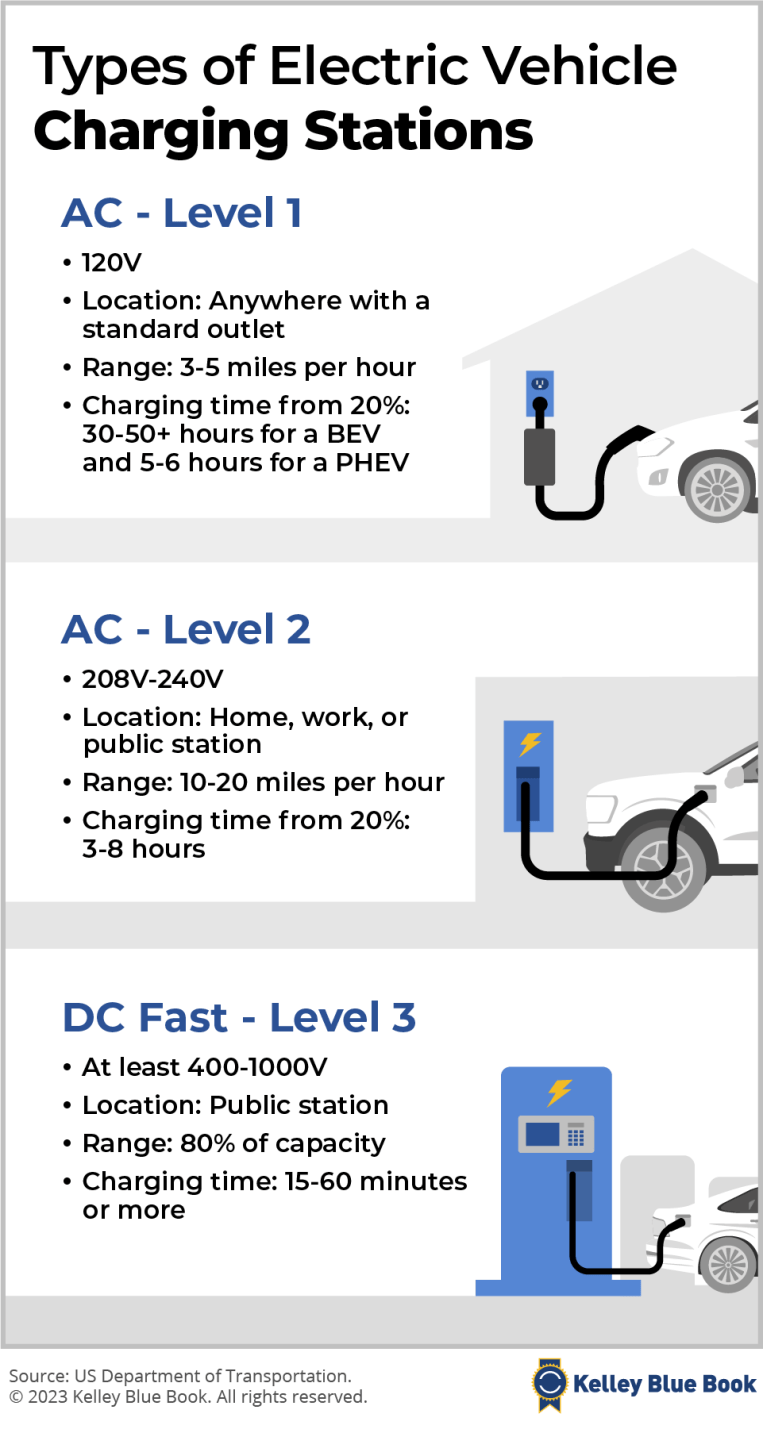
All gas pumps are roughly similar. But the same can’t be said for chargers.
Early on, nearly every electric car sold in the U.S. today came with a Level 1 charger — not much more than an extension cord you plug into a standard 110-volt outlet for a trickle charge. Today, most models have the portable charging cable as an optional accessory. Regardless, when using this type of cable, it’s not unusual for an electric car to take all night to get to a full charge.
Functionally, that’s fine for most drivers on an average day. You probably rarely drive longer distances in a day than the average electric car range. Most of us settle down for the night somewhere we can plug it in. Think of this as filling a swimming pool with a water gun.
Many buyers, though, will want to step up to a Level 2 charger. Usually installed by an electrician (though we know of one you can install yourself), these use a 240-volt outlet like an electric dryer. They usually cut that charging time by more than half. A Level 2 charger is a garden hose for our swimming pool analogy.
Finally, there are Level 3 chargers out and about, like Tesla’s Supercharger stations or other charging networks, such as Electrify America and ChargePoint. These use DC current — up to 350 kWh if your car can take it — and will charge an electric car far faster than anything you can do at home. It’s like calling the fire department to fill your pool directly from an open hydrant.
However, not every electric car can accept power at that rate. Electric cars manage how much power they will draw from a charger. They throttle back what they receive from the most powerful Level 3 chargers to prevent damage to their components.
Electric cars also don’t charge at a constant rate. Testers often find that the first few percent of charge enters the EV battery quickly, and the last few percent takes much longer. Manufacturers often tout their EVs’ charging times by stating how long it takes to charge the battery from 10% to 80%. The time it takes to reach 80% might be half as long as it takes to go from 80% capacity to full. But it’s rare that you even need to charge to 100%.
EV Battery Size Is an Issue
Even if two electric cars can accept the same power flow, that doesn’t mean they’ll finish charging simultaneously. Electric vehicles come with different size batteries. Sometimes different trim levels of identical electric cars carry different size batteries. The Tesla Model S on the road today, for instance, has been sold with battery packs measuring 60, 70, 75, 85, 90, and 100 kWh.
In other words, sometimes you’re filling a kiddie pool, and sometimes an Olympic-size lap pool.
Manufacturer’s Claims: No One Fact-Checks Them
A government agency verifies fuel economy for gasoline-powered cars. Another will check that fuel pumps are dispensing an actual gallon for every gallon for which they charge. But charging times? Manufacturers can claim whatever they’d like. No one verifies what they say.
And they all say something different.
Some manufacturers report the amount of time an electric car takes to charge from an empty battery to 100%. Others say time to 80%. At the same time, others report time from 10% to 80% or 10% to 90%. And virtually all report their numbers in a best-case scenario, using a Level 3 charger that buyers may not use or be able to access.
No one checks these claims.
Battery Technology Is Changing Rapidly
Finally, charging speed calculations are tricky because they don’t last. Battery technology is one of the hottest research fields on the planet today. The company that creates better batteries will improve electric vehicles and enable power grids to store solar electricity for use overnight, build phones that can run on reserve power for days, and even make human missions to Mars easier.
Consequently, new and improved batteries roll out regularly. Automakers know this and sometimes change their configuration on the fly (Tesla, for instance, builds more efficient batteries into its cars as they become available, never waiting for the next model year to improve what they’re offering).
Thus, any calculation involving the cars currently on the market can and will change at any moment. Perhaps even dramatic change with solid-state battery development will happen soon.
Editor’s Note: This article has been updated since it was originally published.








